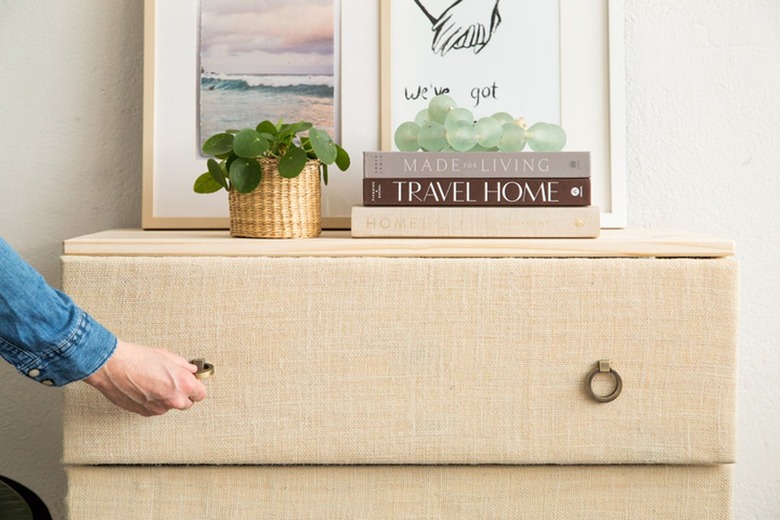How To Get A Musty Smell Out Of A Chest Of Drawers
We may receive a commission on purchases made from links.
A chest of drawers can develop a musty odor if it is stored in an area where mold or mildew is present. Mildew is a thin black or white growth produced by fungi. Mildew occurs in warm, damp spaces, and it can cause damage if the situation isn't corrected quickly. If you find that your chest of drawers has a musty smell, you can try to deodorize it by drying it out. If that eliminates the odor, the wood simply absorbed the odors from the environment in which it was stored.
However, if it continues to smell, mildew is probably present in the piece of furniture, and you should take steps to remove it. If you don't solve the mildew problem, musty odors will transfer to whatever you store in the drawers. A thorough cleaning can help prevent future mildew growth.
Things Needed
-
Portable electric fan or dehumidifier
-
Bucket
-
Rubber gloves
-
Sponge or scrubbing rags
-
Chlorine bleach
-
Paint or varnish remover or paint scraping tools
How to Remove a Musty Odor From a Chest of Drawers
1. Dry the Chest of Drawers
Dry the wooden furniture using heat or air circulation. Move the chest of drawers into the sun. Remove the drawers and place them in the sun to allow the wood to dry. If that's not possible, use a portable electric fan to circulate the air around the furniture to speed drying or put the chest in a room with a dehumidifier to help dry it out. After the wood has dried, check to see if it still smells. If the odor persists, clean the chest.
2. Mix the Cleaning Solution
Add 8 to 10 tablespoons of trisodium phosphate to a bucket and mix in 1 gallon of water.
3. Scrub the Furniture
Put on rubber gloves. Then dip a sponge or rag into the mixture, wring it out, and scrub all surfaces of the furniture. Dip the rag into the cleaning mixture and wring it out again frequently to remove the mildew you're scrubbing off.
4. Rinse the Piece
Discard the cleaning mixture, rinse the bucket, and fill it with clean water. Dampen clean rags and wipe any cleaning mixture off the chest of drawers. Allow the chest to dry and then check for odors and stains.
5. Use a Stronger Cleaning Solution if Necessary
Mix 8 to 10 tablespoons of trisodium phosphate, 1 cup of chlorine bleach, and a gallon of water in a bucket. Put on rubber gloves. Dip a rag in the solution, wring it out, and scrub the surface of the furniture. Rinse the chest of drawers with a clean, well-wrung rag. Allow the chest to dry.
6. Remove the Finish if Necessary
If you discover that mold is growing under the paint or varnish, use a paint remover or paint scraper to remove the finish. Allow the wood to dry well before you refinish the chest of drawers.
Prevent Future Mildew and Odors
Prevent Future Mildew and Odors
Once you have removed the musty odor from the chest of drawers, take steps to prevent mildew from growing again and reintroducing odors to your furniture. There are several steps you can take to limit the growth of mold and mildew in your home:
- Keep your home clean. Dirt, such
as greasy handprints on the drawers, can provide nutrients for mildew to grow. - Limit moisture in your
home. Mold spores grow when there's a lot of moisture in the home. Use exhaust
fans when you take a shower or cook in the kitchen. Run the air conditioner to
take humidity out of the air or use a dehumidifier in the basement or other damp areas. - Use a silica packet to absorb moisture
in the chest of drawers or place a moisture-absorbing product in the room.
